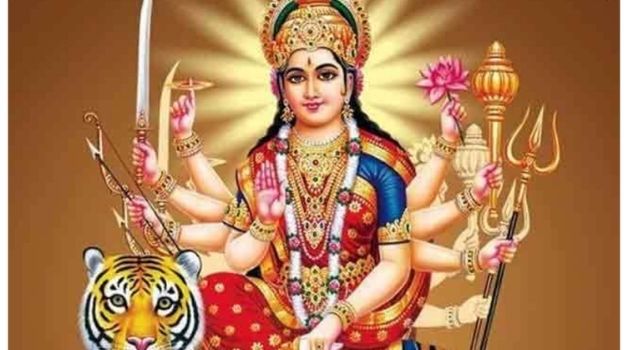See below for the Trincomalee Koneswaram Temple History Darshan Timings Ticket Price, Pooja Details, Darshan Online Booking, and Sri Lanka Trincomalee Koneswaram Temple History here.
According to the Ramayana legend, Lord Shiva commanded Rishi Agastya to construct this magnificent temple on a rock promontory after being moved by King Ravana’s devotion. The temple is located in Sri Lanka. The second lingam was allegedly constructed here by Lord Rama in order to remove the Brahmahasthi Dosham, which was brought on by the curse of murdering the Brahmin Ravana, according to the Ramayana legend. It is also thought that Lord Rama prayed here as well to banish this Dosham. This temple is regarded as one of Sri Lanka’s Pancha Ishwarams and Ramayana-related locations.
Trincomalee Koneswaram Temple History Darshan Timings Ticket Price:
The Thirukonamalai Konesar Temple, also known as the Temple of the Thousand Pillars and Dakshina-Then Kailasam (Southern / Ancient Kailash), is a classical-medieval Hindu temple complex in Trincomalee, a popular destination for Hindu pilgrims in Sri Lanka’s Eastern Province. The most revered of Sri Lanka’s Pancha Ishwarams, Konesar Malai is a peninsula that offers views over Trincomalee District, Gokarna Bay, and the Indian Ocean. It was heavily constructed during the ancient era.
The ancient kovil integrated important elements to create its fundamental Dravidian temple plan, including the Jagati and its 1,000-pillared hall, known as “Aayiram Kaal Mandapam.” hailed for its intricate architecture as the best structure of its time. The Konesar Kalvettu describes the Sinhalese monarch Gajabahu II, who governed Polonnaruwa from 1131 to 1153 CE, as a devoted worshipper of Lord Shiva and a patron of the Konamalai temple. He passed away in Kantalai, the nearby Brahmin community.
Between 1622 and 1624, the complex was demolished by colonial religious attacks, and a fort was erected there using the rubble. Some of its original idols are kept in a temple that was established in 1632 and is situated outside of the city. Following the discovery of its underwater and on-land remains, sculptures, and Chola bronzes by archaeologists and Arthur C. Clarke, curiosity was rekindled all over the world. Through restorations, most recently in the 1950s, it has been kept intact. given the right to own the communities in its floruit.
Click here for Koneswaram Temple Underwater Mystery Pillars
Click here for the Mahabaleshwar Gokarna Temple Seva List and Timings Online Booking
Sri Lanka Trincomalee Koneswaram Temple History:
Many significant historical connections may be made from Koneswaram. The shrine, along with its west coast Ishwaram counterpart Ketheeswaram temple, Mannar, is mentioned as a Paadal Petra Sthalam in the Vayu Purana, the Konesar Kalvettu, and the Tevaram hymns of Sambandhar and Sundarar. It is the most eastern of the five ancient Ishwarams of Shiva on the island and is referred to as Dakshina/Then Kailasam (Mount Kailash of the South) in the Dakshina Kailasa Puranam and the Manmiam works due to its longitudinal position and prominence. Kudiramalai is a Hindu port town on the island’s western coast.
The Mattakallappu Manmiam, a bay temple on the island, has been confirmed as holy for all Hindus thanks to its mention in the Mahabharata, the Ramayana, and the Yalpana Vaipava Malai. The temple is so highly regarded by Saivites that Kachiyappa Sivachariar, in his Kanda Puranam, ranks it with the Thillai Chidambaram Temple and Mount Kailash.
Trincomalee Koneswaram Temple History Darshan Timings Ticket Price:
- This Shakthi Peeta Temple is Open for Completly the day for Pilgrims Darshan.
- Pilgrims can travel by bus to the Temple Just 2 Km away from Central Bus Station.
- Pilgrims can also hire Tuk-Tuk and visit. Also, People can have a Bike/ Bicycle for renting
Colonists used the rubble from the structure, which had been demolished in religious assaults between 1622 and 1624, to construct a fort. Some of the original idols were moved to a temple outside of town that was constructed in 1632. The discovery of its underwater and land remains, sculptures, and Chola bronzes by archaeologists and Arthur C. Clarke reignited global interest in the area. [4] Restoration efforts have kept it in good condition since the 1950s. Trincomalee village, on the cape isthmus inside the compounds, was given control of communities in its floruit to establish the Trincomalee District. Locals are able to be fed and cared for thanks to the temple’s donations.








+ There are no comments
Add yours